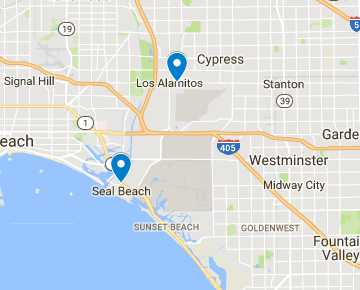Rid Yourself of Toenail Fungus

Have you been hiding your toenails behind nail polish and closed-toed shoes? Are they thick, discolored, and/or brittle? Have you been embarrassed when you insist that you do not take your shoes off at someone’s house or whenever you avoid going to the nail salon due to fear of judgment by your pedicurist?
Fret no longer! We can help you.
What you’ve got is probably what we call onychomycosis, commonly known as fungal toenails. You’ve probably picked it up in one of the following ways:
- Sharing shoes, socks, or a towel from someone else that is infected.
- From walking barefoot in a communal location such as a gym locker room or neighborhood pool.
- Tools from a nail salon (oh the irony!) that haven’t been sanitized properly.
Toenail fungus, tinea unguium, is from the same fungus that causes Athlete’s foot (tinea pedis) and Ringworm (tinea corporis), so cross contamination is not unlikely and it can spread easily as long as there is a break in the skin for the fungus to enter.
Home treatment:
If you notice a slight discoloring and development of other symptoms, you may be able to try some home remedies to manage the fungus. The tough part though, is that you cannot get under the nail to fully treat it, so it can remain under the nail for many years. Still, it doesn’t hurt to try some of the following:
- Over-the-counter antifungal ointment or cream. Early treatment is optimal for best results. Soaking the nails to soften them and then filing down thick nails make it better for the medication to work through and around the nail.
- Some have had luck with remedies like an apple cider vinegar soak or using products that have camphor and eucalyptus oil in them.
- If your nails have become thick but brittle, keep them protected and be sure to trim and file them so that they do not keep breaking.
Prevention tips:
- Never walk barefoot in communal areas that get wet a lot (i.e. communal showers).
- Treat at the earliest sign of infection.
- Be sure to wash your feet each day with soap and warm water.
- Rotate the shoes you wear each day and never re-wear socks. Your shoes should be fully dried out in between wears to prevent fungal growth.
If your toenail fungus has become persistent and other treatments haven’t worked, come see our foot care specialists at Alamitos-Seal Beach Podiatry Group. We can prescribe a combination of oral and topical antifungal medications to get rid of them once and for all. Make an appointment today for a thorough assessment. One of our board-certified podiatrists, Dr. Douglas H. Richie, Dr. Jeremy L. Cook, and Dr. Faye E. Izadi will be happy to help at either of our Seal Beach, CA and Los Alamitos, CA offices in Orange County.





